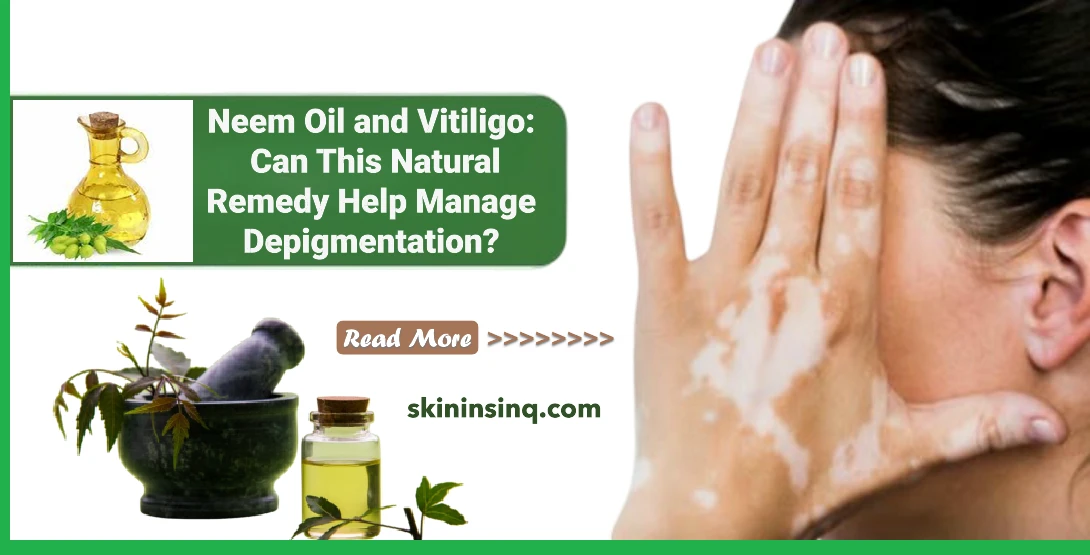Neem Oil and Vitiligo: Can This Natural Remedy Help Manage Depigmentation?
Neem Oil and Vitiligo: Can This Natural Remedy Help Manage Depigmentation?
Neem oil, extracted from the seeds of the neem tree (Azadirachta indica), is widely valued in traditional medicine for its anti-inflammatory, antifungal, antibacterial, and antioxidant properties. But can this natural oil help manage vitiligo, a skin condition characterized by the loss of pigmentation in certain areas of the skin?
Understanding Vitiligo
Vitiligo occurs when melanocytes—the cells responsible for producing melanin—are destroyed or stop functioning. The exact cause isn't fully understood, but autoimmune responses, oxidative stress, and genetic predisposition are all believed to contribute. While medical treatments like phototherapy, corticosteroids, and surgical grafting exist, many people explore natural remedies like neem oil in hopes of improving skin health or slowing pigment loss.
Potential Benefits of Neem Oil for Vitiligo
While neem oil is not a cure for vitiligo, it may offer certain supportive benefits:
1. Anti-inflammatory Effects
Neem oil contains compounds like nimbidin and azadirachtin, which have anti-inflammatory properties. This may help reduce skin irritation or inflammation that sometimes occurs around depigmented patches.
2. Antioxidant Protection
Oxidative stress is believed to play a role in melanocyte damage. Neem oil is rich in antioxidants that may help neutralize free radicals and support the skin’s natural healing processes.
3. Immune-Modulating Properties
Some research suggests neem may have mild immunomodulatory effects. Given that vitiligo may have autoimmune roots, neem oil could potentially help regulate abnormal immune responses, though this claim is not clinically proven.
4. Antibacterial and Skin-Soothing Action
Neem oil helps prevent infections, which is useful if the skin is sensitive or has open wounds from scratching or irritation. It also moisturizes dry skin, which can improve overall skin texture and appearance.
How to Use Neem Oil Safely
If you decide to try neem oil for vitiligo, here are some guidelines:
-
Patch Test First: Always perform a patch test to check for allergic reactions or skin sensitivity.
-
Dilute the Oil: Mix neem oil with a carrier oil like coconut, olive, or jojoba oil to reduce the risk of irritation.
-
Apply Regularly: Apply the diluted oil to depigmented areas once daily. Be consistent for at least a few weeks to monitor any changes.
-
Avoid Sun Exposure Immediately After Use: Neem oil may increase sensitivity to sunlight, so it’s best to apply it in the evening or follow with sun protection.
Limitations and Considerations
-
Lack of Scientific Evidence: There is no conclusive research proving neem oil restores pigmentation or stimulates melanocyte activity.
-
Works Differently for Everyone: Vitiligo is highly individual. What works for one person may not benefit another.
-
Shouldn’t Replace Medical Treatment: Neem oil can be a complementary option, but it shouldn't replace dermatological care or prescribed therapies.
Final Thoughts
Neem oil may support overall skin health due to its natural anti-inflammatory, antioxidant, and antimicrobial properties. However, it is not a medically verified treatment for vitiligo. If you’re exploring neem oil as part of your skincare routine, do so with realistic expectations and consult a dermatologist—especially if you're undergoing other treatments.

Related Blog
What Causes Oily Skin and Can It Be Managed Naturally? Exploring Root Causes and Gentle Solutions
Aug 2, 2025 by Admin
General
What Are the Signs That You Have Sensitive Skin? Key Symptoms to Help You Identify This Delicate Skin Type
Aug 1, 2025 by Admin
General